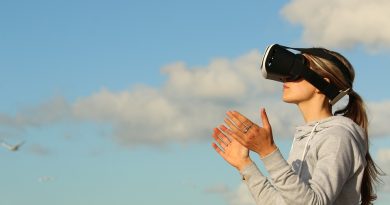Reverse Image Search Benefits
Reverse image search is a technology that enables users to search for images on the internet by uploading a picture or entering the image’s URL. The search engine will then display results that match the uploaded image or the image’s attributes, such as color, shape, and size. This technology is widely used by individuals, businesses, and law enforcement agencies to identify the source of an image, detect fake images, and find similar images.Reverse Image Search Benefits are as follows.
Benefits of Reverse Image Search:
In today’s digital age, where images and videos are ubiquitous, it has become increasingly important to have access to reverse image search technology. Reverse image search is a tool that enables users to search for images using an image rather than text. This technology has numerous benefits, including helping to identify plagiarism, finding the original source of an image, and performing research on a specific topic. In this article, we will explore the various benefits of reverse image search in more detail. Reverse image search technology has numerous benefits, including identifying plagiarism, finding the original source of an image, performing research on a specific topic, verifying social media posts, and protecting your online reputation. With the increasing use of images and videos online, reverse image search is becoming an increasingly essential tool for anyone who wants to ensure that their content is original, protected, and properly attributed. By using reverse image search, you can save time, protect your rights, and enhance the quality of your work.
Identification of plagiarism
Reverse image search technology can be used to identify plagiarism in written and visual content. Plagiarism is a serious offense, and it can result in severe consequences, including loss of reputation, legal action, and academic sanctions. Reverse image search technology allows users to upload an image or enter an image URL to check if the same image appears elsewhere on the internet. This tool can be particularly useful for writers and researchers who need to ensure that their work is original and not copied from other sources.
Finding the source of an image:
Reverse image search technology helps users to find the original source of an image. This is particularly useful when trying to track down the creator of an image or to verify the authenticity of an image.One of the most significant benefits of using reverse image search is that it can help you find the original source of an image. This is particularly useful for photographers, graphic designers, and artists who want to protect their intellectual property rights. By using reverse image search, you can quickly find out if your images are being used without your permission or without proper attribution. This tool can also help you track down stolen images and take appropriate action to protect your rights.
Identifying fake images:
Reverse image search can help identify fake images that are often shared on social media. This technology can help individuals and organizations to fact-check images and prevent the spread of misinformation.
Finding similar images:
Reverse image search can be used to find similar images to the one uploaded. This is useful when looking for images that are similar in style or content.Reverse image search technology can also be used to identify plagiarism in written and visual content. Plagiarism is a serious offense, and it can result in severe consequences, including loss of reputation, legal action, and academic sanctions. Reverse image search technology allows users to upload an image or enter an image URL to check if the same image appears elsewhere on the internet. This tool can be particularly useful for writers and researchers who need to ensure that their work is original and not copied from other sources.
Protecting copyright:
Reverse image search can help identify unauthorized use of copyrighted images. This technology can be used to track down individuals or organizations that are using copyrighted images without permission.
Research on a specific topic:
Reverse image search technology can also be used to perform research on a specific topic. For example, if you are writing an article on a specific subject, you can use reverse image search to find related images and videos. This can help you gather additional information on the topic and provide visual aids to support your argument. Reverse image search can also help you identify experts in the field and find relevant articles and research papers.
Verification of social media posts:
With the rise of social media, it has become increasingly important to verify the authenticity of images and videos shared on these platforms. Reverse image search technology can help you determine whether an image or video is real or fake. By using reverse image search, you can quickly find out if an image or video has been doctored or manipulated. This tool can be particularly useful for journalists and fact-checkers who need to verify the authenticity of information before publishing it.
Protecting your online reputation:
Reverse image search technology can also help you protect your online reputation. By using this tool, you can quickly find out if someone is using your images or videos without your permission. This can help you take appropriate action to have the content removed or properly attributed. Reverse image search can also help you identify instances where your images or videos have been used in a negative or inappropriate context, allowing you to take corrective action to protect your reputation.
Drag and drop an image
Some reverse image search engines allow users to drag and drop an image onto the search bar. This method is useful when you want to perform a quick reverse image search without having to navigate to a separate page to upload the image. The reverse image search engine will analyze the image and provide search results that match or are visually similar to the original image.
How does Reverse Image Search Work?
Reverse image search technology uses machine learning algorithms to compare the uploaded image or image attributes with images in the search engine’s database. The algorithms analyze the uploaded image’s color, shape, and other attributes to find similar images in the database. The search engine then displays results that match the uploaded image or image attributes.
There are several reverse image search engines available, including Google Images, TinEye, and Bing Image Search. These search engines use different algorithms to search for images, so the results may vary depending on the search engine used.
Steps to Conduct Reverse Image Search:
Choose a reverse image search engine:
There are several reverse image search engines available, including Google Images, TinEye, and Bing Image Search. Choose the search engine that you are most comfortable using.
Upload the image or enter the image’s URL:
Once you have chosen the search engine, upload the image or enter the image’s URL that you want to search for.
Upload an image
The most common method used to perform a reverse image search is to upload an image to a reverse image search engine. Users can upload an image from their computer, smartphone, or tablet to a reverse image search engine such as Google Images, TinEye, or Bing Images. The reverse image search engine will analyze the image and provide a list of search results that match or are visually similar to the original image.
Enter an image URL
Another way to perform a reverse image search is to enter an image URL into a reverse image search engine. This method is useful when you don’t have the image file on your device but have access to the image URL. The reverse image search engine will analyze the image at the URL and provide search results that match or are visually similar to the original image.
Review the search results:
The search engine will display results that match the uploaded image or image attributes. Review the results to find the information you are looking for.
Refine your search:
If the search results are not what you are looking for, refine your search by adding more details or changing the search criteria.
Reverse image search technology is a valuable tool for individuals, businesses, and law enforcement agencies. It helps to identify the source of an image, detect fake images, find similar images, and protect copyright. There are several reverse image search engines available, including Google Images, TinEye, and Bing Image Search, and each uses different algorithms to search for images. By following the steps outlined above, users can conduct a reverse image search and find the information they are looking for.






